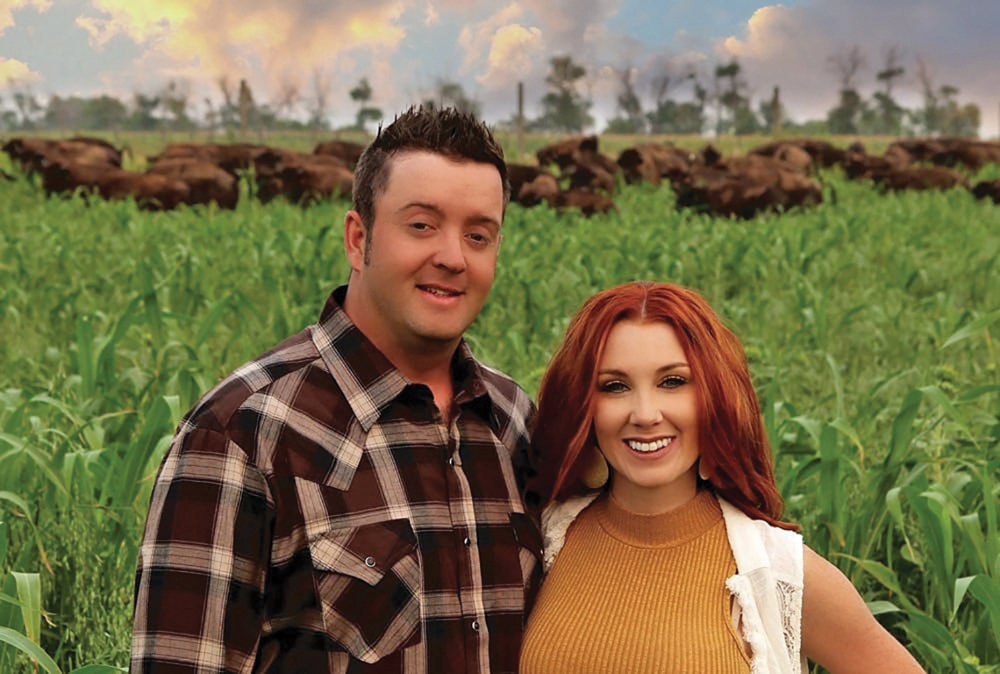Pipestone’s Brooks White needs no convincing about the biological value of regenerative agriculture.
His fields of cover crops, annual stands grazed by bison, and adaptive pasture system speak for themselves of his commitment to this way of farming.
And for that commitment he’s been rewarded — in the form of lower inputs, higher soil organic matter, more and better feed for his livestock and a general improvement in efficiency from the cost side.
But on the income side, nothing’s changed. Despite having a product that ticks a lot of boxes for today’s ‘woke’ consumer, they’re still selling the products like any other commodity.
“We have a product that we should be able to demand a premium from,” White told the Co-operator. “I just don’t know how to do it.”
White is not alone, it’s something the whole sector is grappling with, including market analyst Brenda Tjaden.
Her firm Sustainable Grain centres around resources and analysis for regenerative agriculture, and she has spent the last several years connecting the regenerative movement with end-users.

Brenda Tjaden.
photo: File/Laura Rance
“The question that I get asked the most often is, will the market pay for this? Is the market going to pay me to change?” Tjaden said.
At least for now the answer isn’t what most farmers want to hear.
“It absolutely won’t,” Tjaden said.
But the news isn’t all bad. There is growing interest on the part of consumers in the products.
“The market is looking to connect with farmers who are embracing change and they’re making measurable improvements in things like soil health,” she said.
Tjaden has seen demand for regeneratively produced food, although she says the volumes necessary for a robust supply chain have yet to flow.
A November 2019 report by her firm notes the rise in “conscious consumerism” in the market, as well as the growth of direct marketing, farm-to-plate restaurants and farmers’ markets, all of which, she says, have provided small-scale market opportunities for regenerative movement.
Scaling those market opportunities up, however, will take something else: buy-in from the big companies. Tjaden suggests that the growing number of institutions like schools and hospitals, not just individuals, buying with social responsibility in mind will help drive that large-scale demand.
What’s in a name?
The movement’s shifting definition presents one big hurdle to those opportunities.
Regenerative agriculture is, by its nature, versatile and farm specific, and just what it is has yet to be clearly defined, and it is not entirely clear it can be.
The industry itself has no collective definition and trying to come up with one is still a source of debate, even amongst those who are its fiercest advocates.

Brooks White, seen here with wife Jen, says his instincts say he should be able to get a premium for regenerative agriculture, but he’s not sure
how to.
photo: Canada’s OYF
Regenerative systems may — or may not — include cover crops, intercropping, adaptive grazing systems, no-till annual grain production, livestock integration or any combination thereof.
Organic systems in and of themselves may be folded in as just one aspect of the regenerative agriculture umbrella. And a farm is not automatically regenerative just because it is organic.
Others, meanwhile, argue than any regenerative system must include livestock or zero tillage, something that many organic farms struggle with due to their reliance on mechanical weed control.
That disagreement, plus the wide spectrum of practices associated with regenerative agriculture, make it almost impossible to design auditable guidelines, Tjaden said.
“It looks different on every farm,” she said. “It doesn’t lend itself to a protocol. It’s not black and white and organic is very black and white. You either used that stuff or you didn’t and this is really different.”
Alan McKenzie, who farms in the Nesbitt area, has a foot in both these camps. His beef and grain operation, spanning 4,000 acres, became fully organic in 2011. At the same time he’s one of the province’s foremost proponents of regenerative agriculture, with the philosophy broadly integrated into his farm.
“There’s going to be so many variations of that, that it’s going to be very tough to put a brand behind that,” he said. “I like the idea of it, but I really think it’s going to be a tough one. Who’s going to be behind this to actually come up with the rules of what actually is regenerative? Is the consumer really going to know what that is at the end of the day anyway?”
Groups in the U.S. have toyed with a regenerative organic label, but have run into issues due to tillage requirements in organic systems, he noted.
Farmer Matt Van Steelandt of Medora also discounted the prospect of a protocol, although he, like White, hopes to one day see a more tangible cash benefit to what he does on farm.
“I think that’s where we hope to be,” he said, although he noted that any real market development is likely years down the road.
Data agriculture and easy access to technology may help by giving consumers more real-time information on the food in their cart, he noted, something that might be yet another window to drive market demand.
Breach of protocol
The lack of protocol has hindered market development, Tjaden said. Some companies have shown interest in regenerative agriculture, but have been reluctant to monetize the products without certification.
Groups like the Rodale Institute, a U.S. non-profit centred on organic research, has attempted to build such a protocol, although Tjaden noted that not all farms have embraced those efforts, and some claim the protocols are unachievable on their farms.
At the same time, according to Evan Fraser, director of the Arrell Food Institute at the University of Guelph, regenerative agriculture may be putting itself on the wrong foot without a protocol.
“I think what you might be seeing is farmers adopting very localized approaches,” Fraser said, noting that includes both agriculture and marketing practices. “So that particular niche in the broad area of sustainability may be really resistant to consolidation.”
Without that consolidation, Fraser warned the movement is at a significant disadvantage against the wealth of other environmental claims clamouring for industry attention, many of which can be labelled and have better recognition from consumers.
In fact what’s good for the production system and its end goal of improving a farm ecosystem — focusing on local solutions to local problems — make it difficult to quantify it and market it to a large-scale food system that requires clear definition.
“It will very much make it difficult to go to scale, to consolidate and create a common understanding that allows that subsection of the market to grow significantly,” he said.
Sells itself?
Despite Fraser’s warnings, farmers like McKenzie suggest that agronomic and efficiency benefits of regenerative agriculture may be enough to sell the practice to their neighbours, even if a distinct market does not appear.
“I don’t think it’s going to take a regenerative market or a place where you can all of a sudden get another 50-cent premium to all of a sudden change over,” McKenzie said. “I think most guys are going to go this route because for the good of their land they’re going to change over not because there’s a market for it.”
At the same time, he acknowledged, some of those purported benefits take years to develop or are largely intangible, while producers are already stretched for both time and profit margins, and may be reluctant to take on the risk of shaking up their whole farming philosophy.
“The only way I think it’s really going to sell itself is when there’s enough guys doing it and your neighbours are going to watch and it will spread from there. It’s going to take awhile and I just feel it’s going to build up momentum as times go on,” he said.